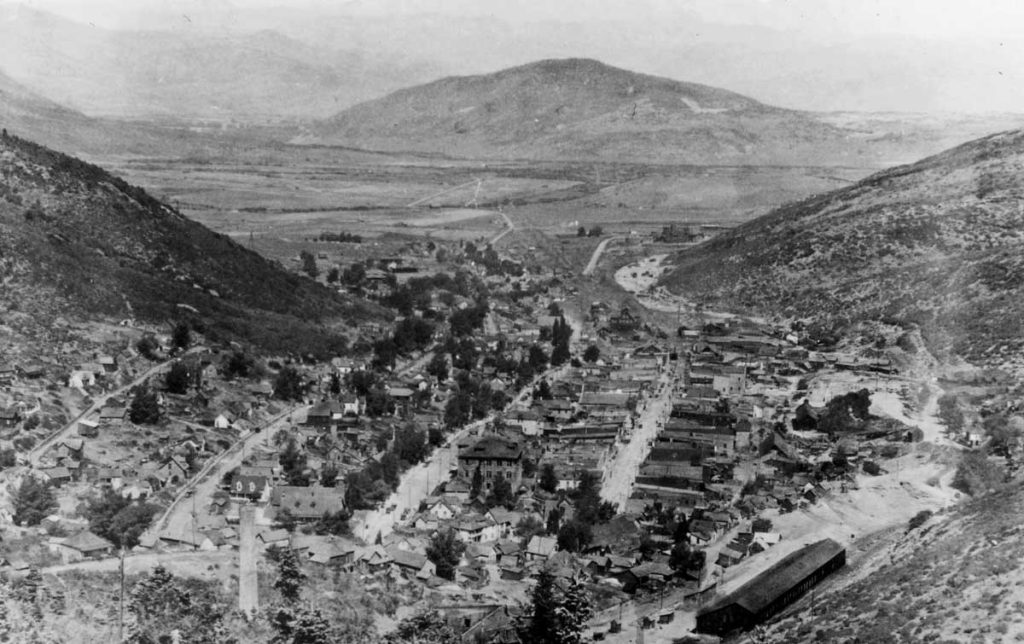The U.S. Geological Survey maps of Park City refer to the perennial stream originating in lower Deer Valley and flowing past Park City as “Silver Creek”. But locals call the same stream through town “Poison Creek,” which raises the question: why?
When the first settlers came to what is now Park City, they found a clear mountain stream running through town where they could fish for trout. When the rich mineral deposits around town began to be mined, the companies built mills in the 1870s and 1880s to extract the valuable metal from the ore. Ground ore and water slurry remaining after the extraction steps was called mill tailings.
The four earliest mills were the McHenry Mill located in lower Deer Valley, the Ontario Mill in lower Ontario Canyon; the Union Mill in lower Empire Canyon; and the Marsac Mill located roughly where the Old Town Transit Center is today. During ensuing mining developments other mills were built in Empire Canyon, Walker & Webster Gulch, Woodside Gulch, Thaynes Canyon, and further down Silver Creek. Most of these mills discharged their mill tailings into the nearest stream, polluting it. This was entirely legal at the time as, prior to the environmental protection statutes of the 1960s and 1970s, streams and rivers were common disposal locations for industrial and municipal wastewaters.
About the same time the early mills impacted the natural streams, the term “Poison Creek” was applied to the stream along what is now Daly Avenue all the way through Park City and what is now the Prospector Square neighborhood.
While the mills operated, Silver Creek and its tributaries carried perennial flows of mill tailings, consisting of sand through clay sized particles, along with mill wastewater. In 1912, the three main mill operators collaborated to build the Richardson Flat tailings pond below Park City to restrain their tailing solids from continuing down Silver Creek. The stated reasons were to reduce impacts to downstream farms and retain tailings solids for future reprocessing.

Credit: Park City Historical Society & Museum, Fraser Buck Collection
Silver Creek carried treasure in the tailings because the early mills processed ores rich in metal-bearing minerals and the operators accepted less than total recoveries from the ores. Therefore, some of the valuable minerals in the ore were discharged with the mill tailings. This gave rise to a thriving local industry called “jiggers.” These were companies that built processing facilities along the streams and in the old tailings sand deposits to reprocess the tailings and extract valuable minerals.
But tailings are apparently not the only reason why Poison Creek got its name. The Park City community regarded the stream as a sewer for sanitary waste, and pretty much anything else. A 1917 report by the Utah State Health Office said Silver Creek was the sewer system for Park City. It carried raw sewage from homes and businesses along its path, including many outhouses built over the stream itself.
An article in the Park Record suggested that the City should take on construction of underground sewers in town that would empty into Poison Creek to replace the multiple open sewers in town, “that are unsightly and unsanitary.” The Park Record also reported multiple cases of disgusting uses of the stream. A 1916 inspection by the mayor behind the houses along upper Main Street found decaying cattle, dogs, and chickens along with other “filth and corruption” in the stream. A stillborn baby boy was reportedly found in the creek behind City Hall.
A lighter case was of the Summit County Sheriff raiding a home in Empire Canyon during Prohibition and finding a large still that was hot, but empty. It seems the residents delayed the Sheriff’s entry into the house until they could empty the still into Poison Creek to get rid of the evidence. Thankfully, modern sanitary sewer systems have since corrected these conditions.
So, it appears that Silver Creek and Poison Creek are both appropriate historical names because of the valuable tailings it carried but also because it was Park City’s first sewage disposal system.